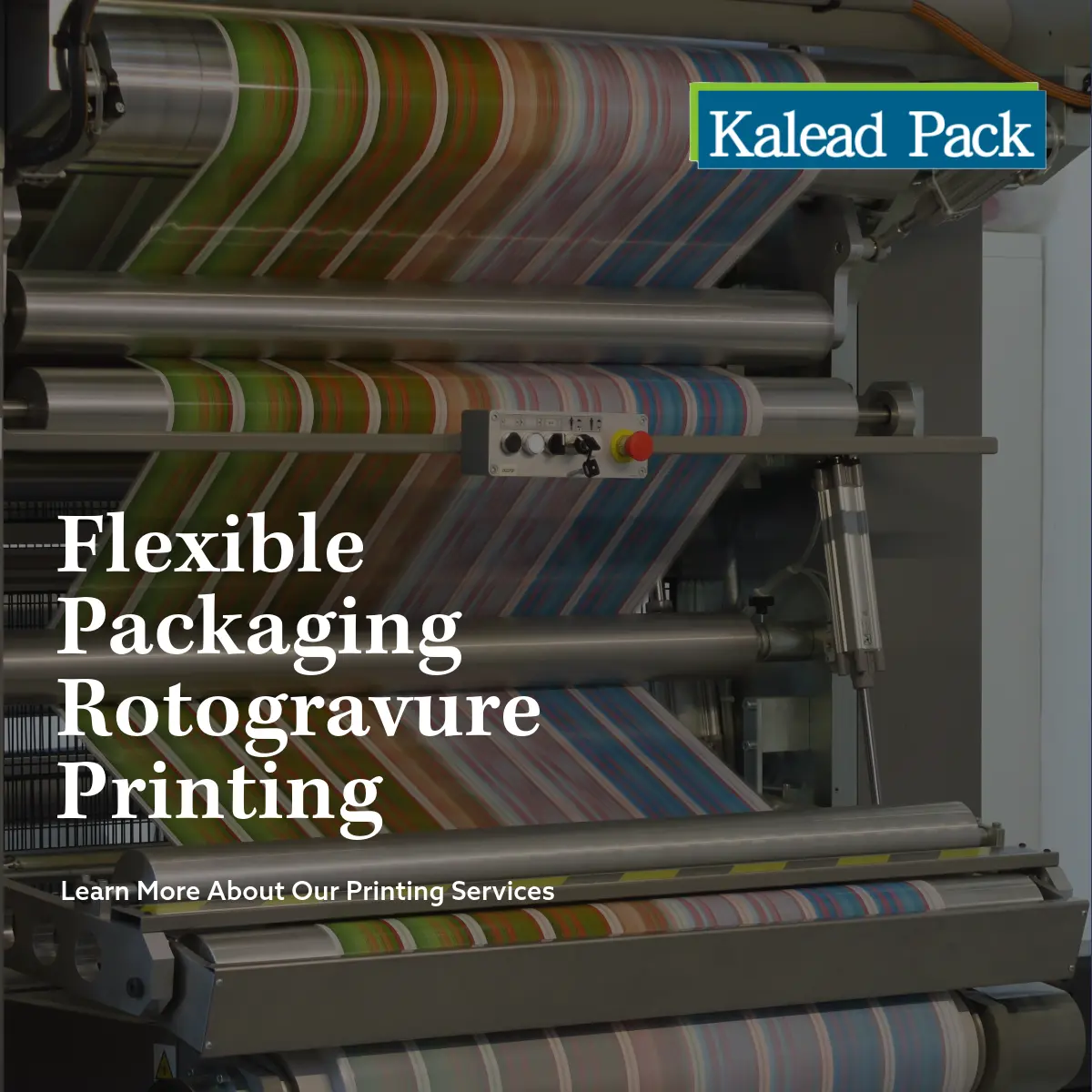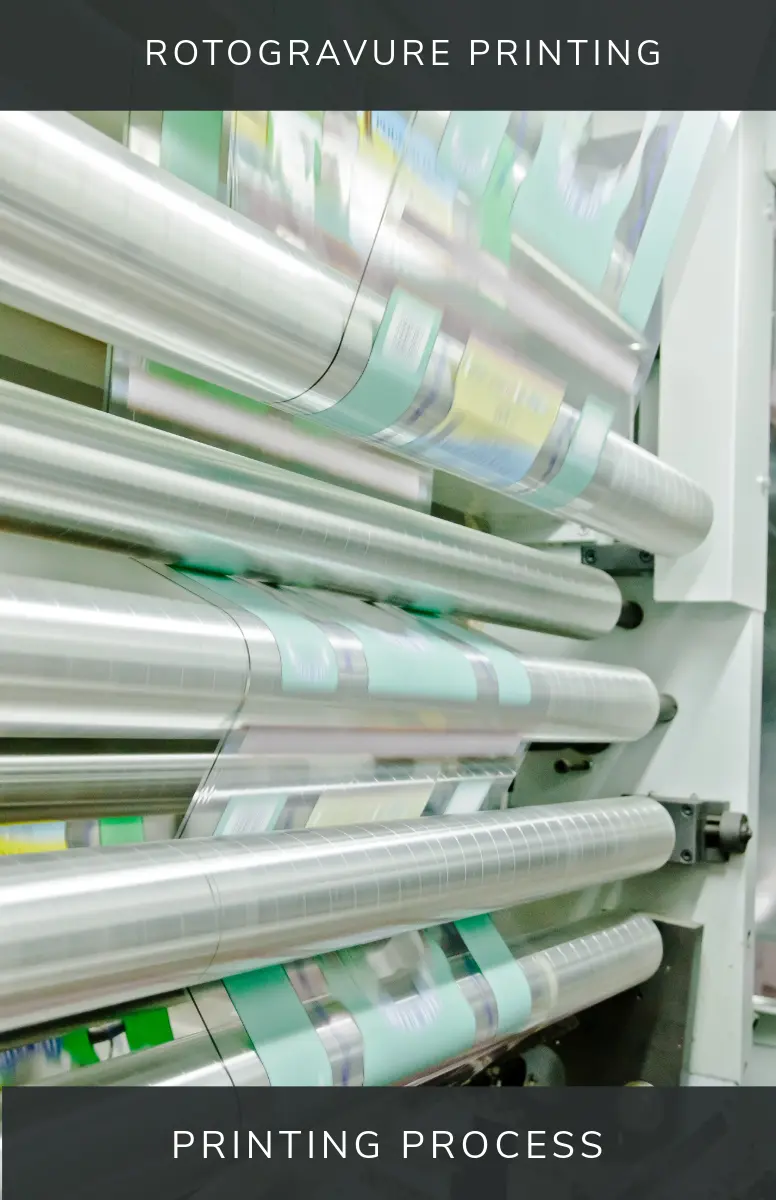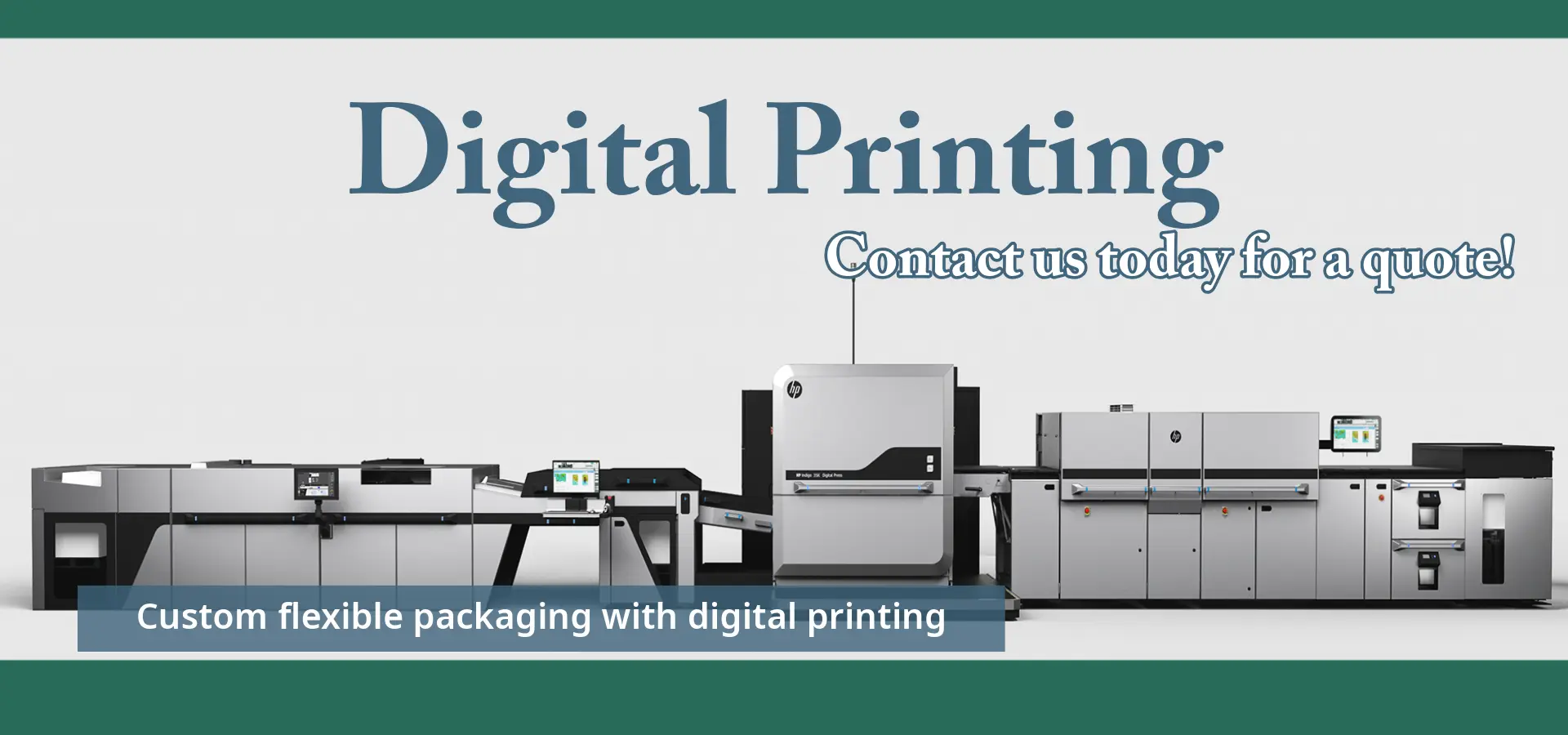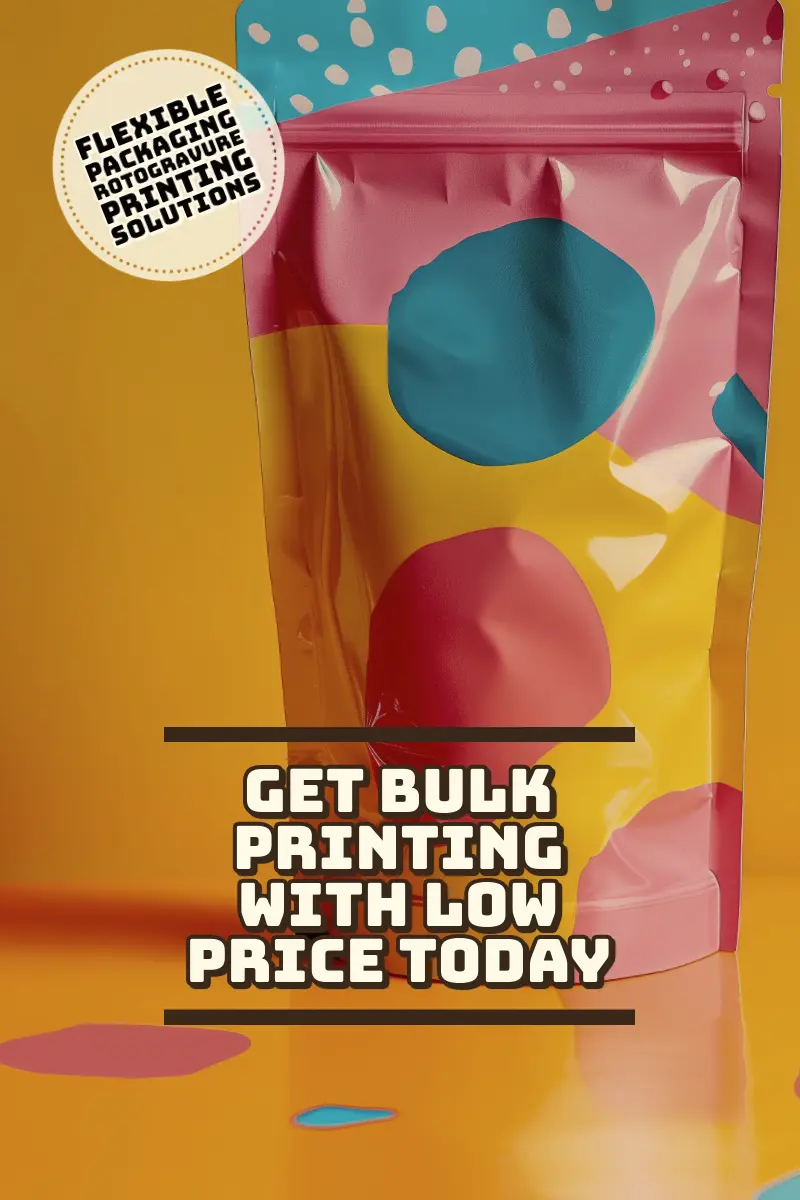Impresión en Rotograbado
Flexible packaging rotogravure printing remains the top choice for large-scale custom packaging. This well-established traditional printing technology provides high-quality image reproduction, making it ideal for various flexible packaging materials.
What Is Flexible Packaging Rotogravure Printing?
Flexible packaging rotogravure printing is an effective method to print images and text on plastic, foil, and paper. This process involves engraving the image onto a cylinder, which transfers the ink onto the packaging material. The cylinder contains tiny cells that hold the ink, and it transfers the ink to the material as it rotates.
One of the main benefits of rotogravure printing is its ability to produce high-quality, vivid images on packaging surface. This is perfect for packaging that needs to be eye-catching and detailed, like food, medicine, and other consumer products.
(Many food or non-food manufacturers use this printing method to make detailed designs on bulk packaging bags.)
The process starts with engraving the cylinder with the desired image, using either a laser or a diamond tool. The operator then mounts the cylinder onto the printing press, where it picks up ink from an ink fountain. A doctor blade removes excess ink, leaving the ink in the engraved cells. As the material passes through the press, it contacts the inked cylinder, transferring the image onto the material.
Rotogravure printing is efficient and fast, making it a cost-effective choice for large-scale production. It offers excellent color consistency and uses various inks and materials, making it suitable for different packaging needs.


Rotogravure Printing Process
1. Cylinder Engraving
The rotogravure printing process begins with cylinder engraving. A copper-plated steel cylinder gets engraved with tiny cells. Each cell holds ink.
2. Ink Application
Subsequently, the cylinder spins within an ink reservoir.. The cells fill with ink. A doctor blade scrapes off excess ink from the surface. Only the cells contain ink.
3. Printing
The cylinder then contacts the substrate, which could be paper or plastic film. The ink transfers from the cells to the substrate. This step ensures precise and consistent prints.
4. Drying Process
After printing, the material passes through drying ovens. These ovens evaporate solvents from the ink. This step is crucial to prevent smudging.
5. Material Rewinding
Finally, the printed material gets rewound onto a roll. This makes it ready for further processing or packaging. Rewinding ensures that the print remains intact.
6. Slitting
The slitting process begins with mounting the printed roll material onto the slitting machine. The machine uses rotary blades or laser cutting technology to cut the wide roll into strips of the desired width.
Advantages of Rotogravure Printing
High-Quality Image
Rotogravure printing offers excellent image quality. The process can produce highly detailed images with sharp lines and vivid colors. This makes it ideal for packaging that needs to stand out on shelves. Colors remain consistent across large print runs.
Flexible Substrate Printing
Rotogravure prints on multiple substrates. It works well with thin films, aluminum foil, and paper. This flexibility allows businesses to choose the best material for their products. For example, snack packaging often uses thin film for their durability and lightweight properties.
Cost-Effectiveness
Rotogravure is efficient for long-run printing jobs. The initial cost of creating engraved cylinders is high.
However, these cylinders last a long time without degrading. This leads to lower costs for large volume orders. Companies save money when producing millions of identical packages.
Cost Benefits
Rotogravure has significant cost benefits. Although setup costs are high, per-unit costs decrease with larger quantities. This makes it a cost-effective choice for products requiring mass production. Brands benefit from lower overall expenses while maintaining high-quality prints.
Rotogravure Printing for Large Production Runs
- Rotogravure printing may be an excellent option for brands looking to reduce per unit costs, especially for production runs of 10,000 units or more.
- It is a more durable and fade resistant printing method than impresión digital.
- Es posible igualar colores Pantone para obtener tonalidades precisas.
- Permite una amplia selección de acabados y efectos para bolsas.
- La consistencia de color es excelente entre diferentes tiradas.
- Se utilizan placas de impresión de cobre, una por cada color, que pueden reutilizarse para millones de impresiones en múltiples tiradas.
- Los costos de las placas son únicos y suelen generar ahorros después de la primera tirada.
- Las placas individuales pueden reemplazarse para actualizar diseños con cambios en la información de la fórmula.
Impresión por Rotograbado vs. Impresión Digital
La impresión de envases flexibles tiene 2 métodos comunes. Aquí un resumen:
Rotograbado:
- Ideal para proyectos de alta calidad, gran volumen y consistencia.
- Perfecto para industrias que requieren empaques detallados y vibrantes, como alimentos y farmacéuticos.
Impresión Digital:
- Recomendada para tiradas pequeñas/medianas y proyectos personalizados.
- Ideal para negocios que necesitan entregas rápidas y diseños personalizados, como materiales de marketing o empaques a medida.

Comparación: Rotograbado vs. Impresión Digital
| Característica | Impresión en Rotograbado | Impresión Digital |
|---|---|---|
| Tecnología | Usa cilindros grabados | Usa archivos digitales e inyección/láser |
| Tiempo de preparación | Preparación prolongada | Preparación rápida |
| Rentabilidad | Costo efectivo para grandes volúmenes | Costo efectivo para tiradas cortas |
| Calidad de impresión | Alta calidad y consistencia | Alta calidad, pero puede variar |
| Gama de colores | Reproducción cromática excelente | Buena gama de colores |
| Tiempo de entrega | Mayor (por preparación y producción) | Entrega rápida |
| Flexibilidad | Menos flexible, ideal para trabajos repetitivos | Alta flexibilidad, cambios de diseño fáciles |
| Costo inicial | Alto (por grabado de cilindros) | Bajo |
| Impresión de datos variables | No aplicable | Ideal para datos variables |
| Impacto ambiental | Mayor desperdicio y uso de químicos | Menor desperdicio, más ecológico |
| Durabilidad | Muy duradera (hasta 3 años) | Duradera, pero puede desvanecerse |
Preguntas Frecuentes
El proceso usa cilindros grabados que transfieren tinta al sustrato. El cilindro gira en un tintero, recoge tinta en sus celdas grabadas y la transfiere al material.
Ofrece imágenes precisas y de alta calidad, eficiencia y velocidad. Además, es rentable para grandes tiradas por su durabilidad y producción rápida.
Sí, el rotograbado es rentable para grandes volúmenes. La configuración inicial puede ser costosa, pero ahorra dinero a largo plazo en producciones masivas.
Sí, KaleadPack ofrece muestras gratuitas con envío mundial. Contáctenos. Brindamos soluciones integrales: bolsas, impresión de films y maquinaria.

